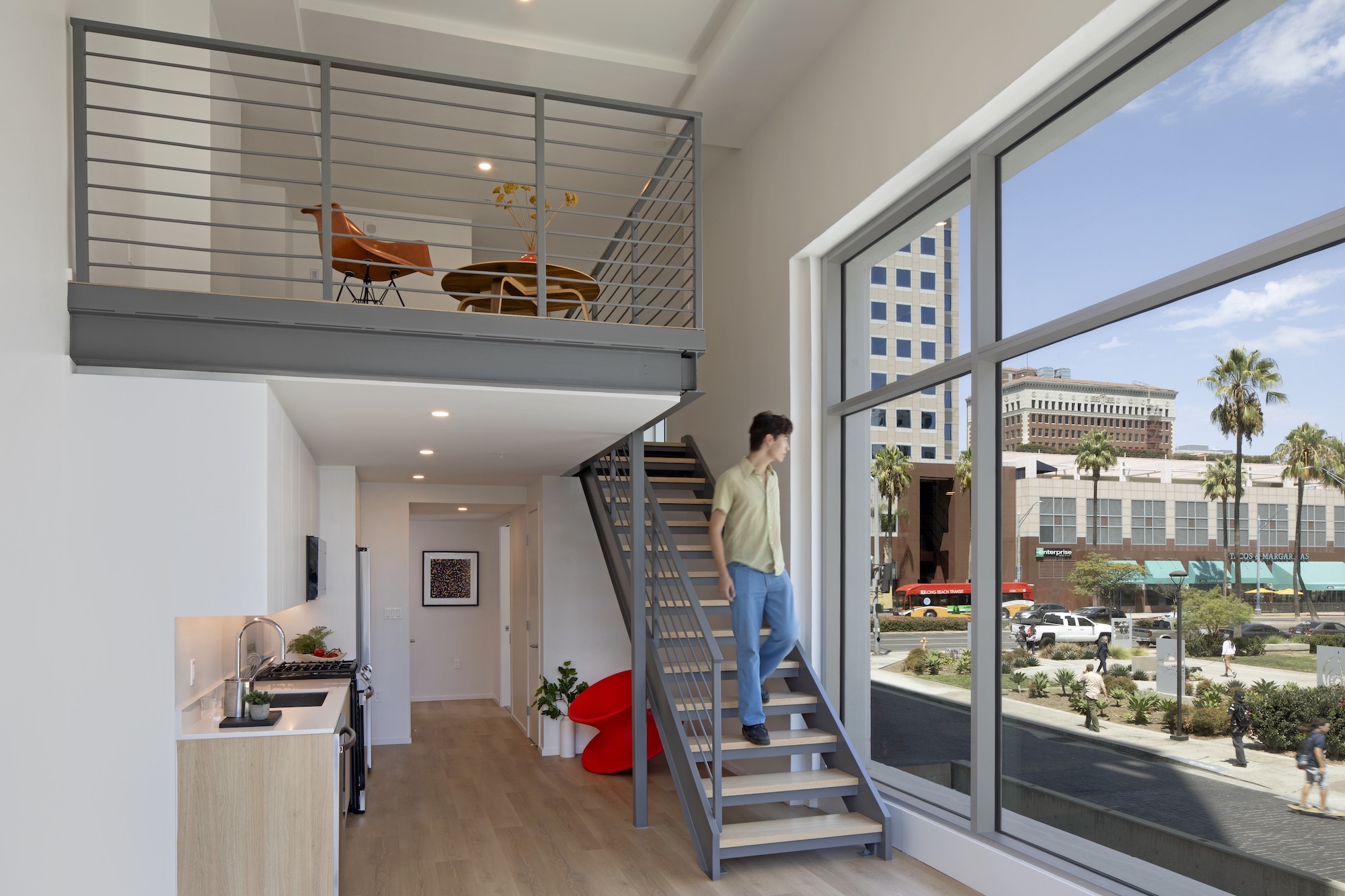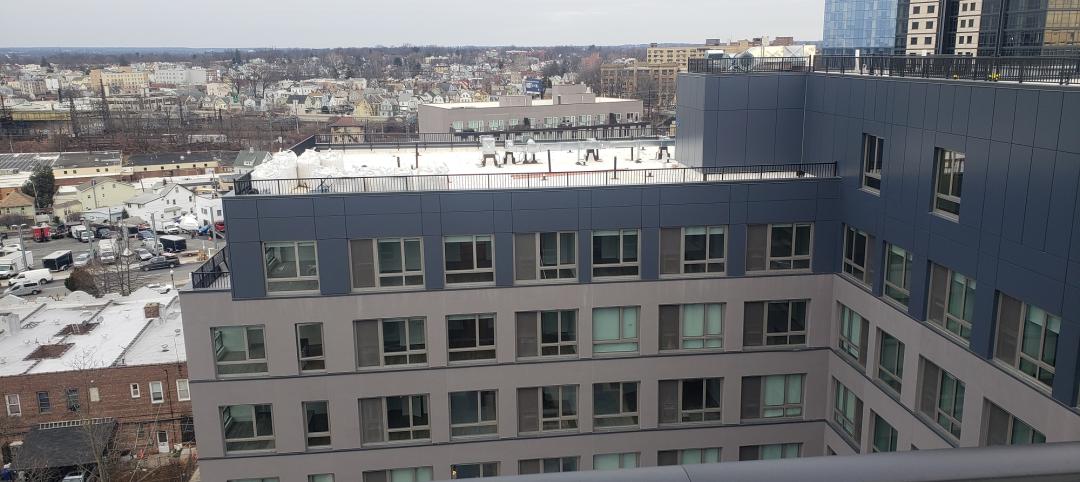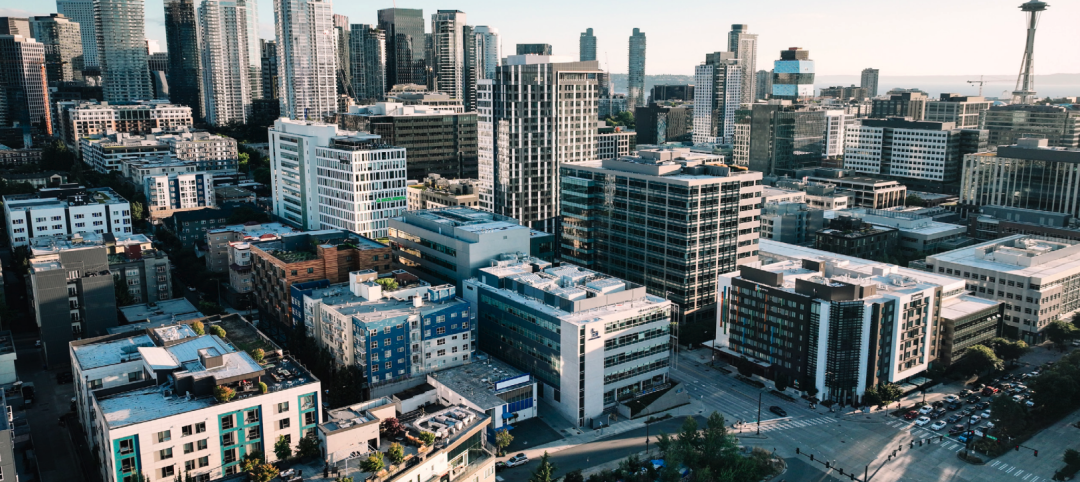A project to convert an underperforming mid-century office tower in Long Beach, Calif., created badly needed market rate housing with a significantly lowered carbon footprint. The adaptive reuse project, composed of 203,177 sf including parking, created 106 apartment units out of a Class B office building that had been vacant for about 10 years.
The $44 million 200 West Ocean project repurposed existing steel and concrete instead of trashing them, resulting in a 69% reduction in embodied carbon, an estimated 3.19 million Kg of CO2, and prevented some 26 million pounds of material from entering the waste stream.
The design included cutting slots into existing concrete to double the size of all windows, increasing natural daylight, and maximizing views for residents. This transformed an otherwise dark, insular, and flat concrete facade into an inviting, articulated building, producing a more appealing connection between the city fabric and residents.
The massing and floor plans of the building were altered to carve out balconies and outdoor terraces from the façade. More than 75% of the units have substantial natural ventilation and direct outdoor patios, allowing residents to benefit from cool ocean breezes. Recessed patios on the south side of the building reduce heat gain and maximize ocean views.
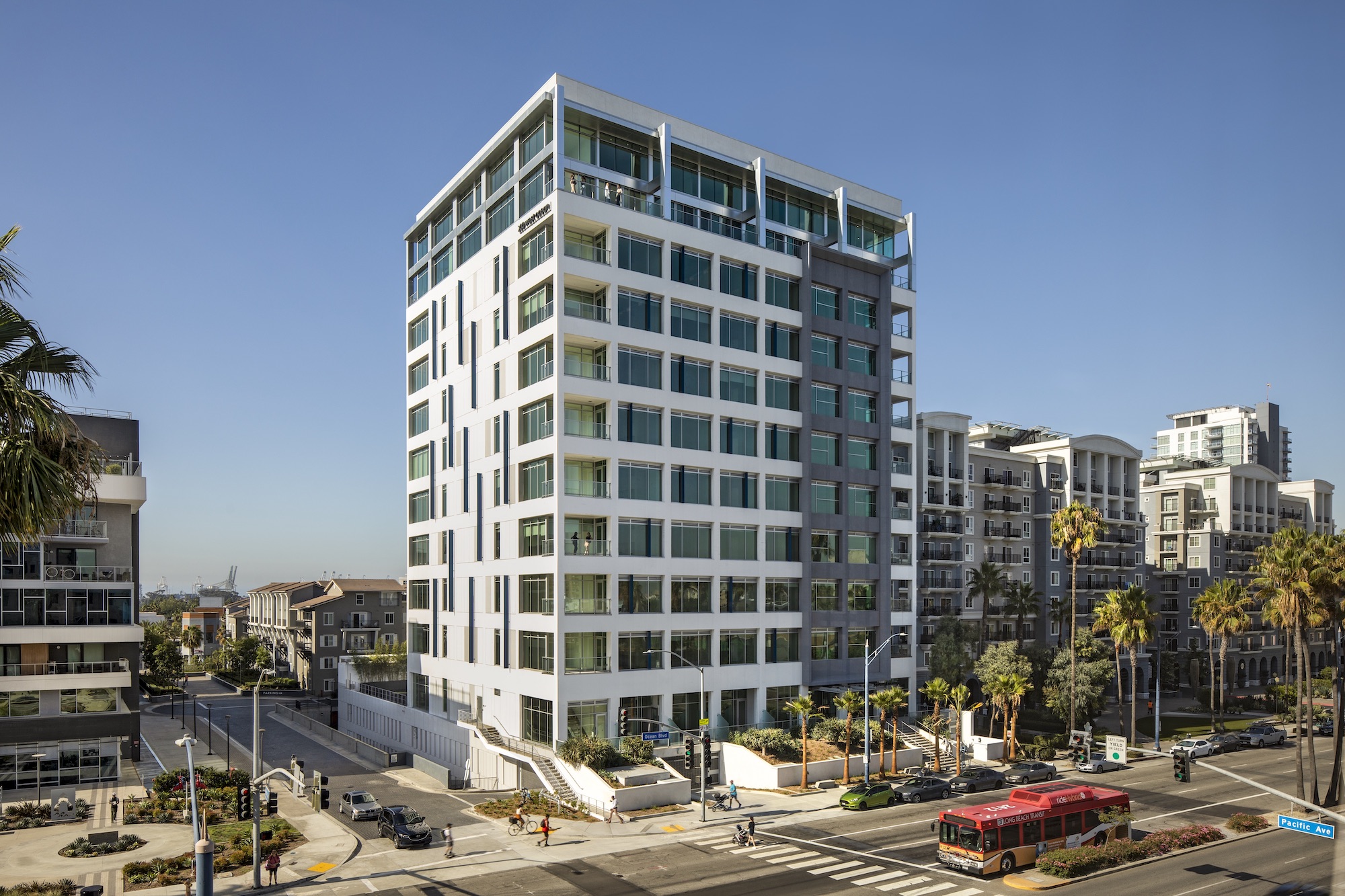
Strengthening part of the parking structure roof enabled design firm Studio One Eleven to add a community room, pool, spa, and barbecue area. Outdated mechanical equipment was removed from the roof of the main building, allowing transformation of the rooftop space into eight two-story penthouse townhomes.
The rooftop stretches beyond the glass facade of the top two stories and is lit from below at night. Interior atriums were included in the four inbound penthouse units. By creating an opening in the rooftop, bedrooms without direct windows could have natural light and ventilation as well as dramatic views through the double-height living room beyond.
Residents have just a five-minute walk to public transit that connects to downtown Los Angeles. The front sidewalk connects directly to the Pike, a promenade of dining, retail, and the Long Beach Convention Center.
On the project team:
Developer: Greystar
Design architect: Studio One Eleven
Architect of record: Studio One Eleven
MEP engineer: Donald Dickerson Assoc.
Structural engineer: Labib Funk and Assoc.
Civil engineer: KPFF
Landscape Architect: Mark Tessier Landscape
Construction Manager: JR van Dijs
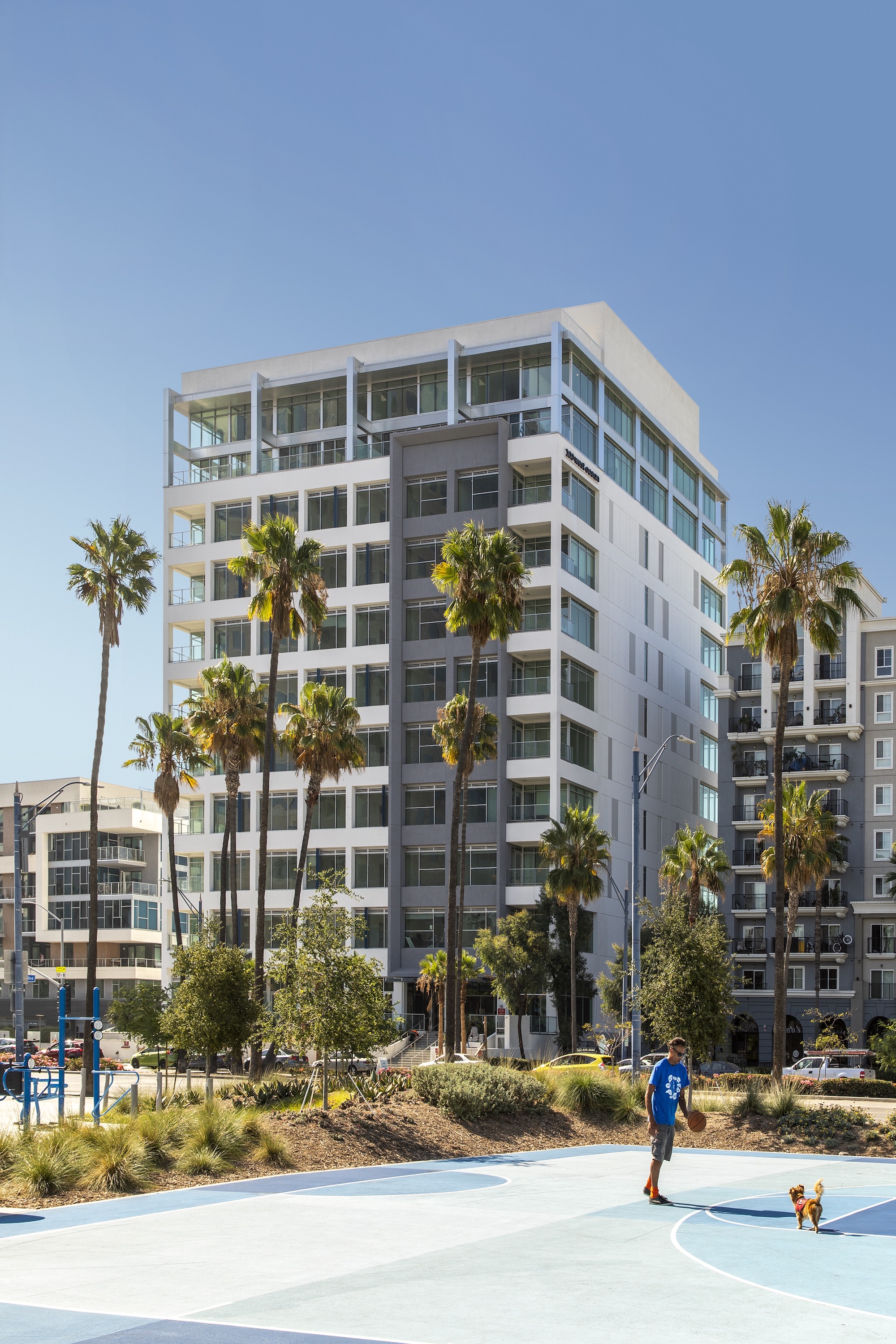
Design essay from architect Studio One Eleven
Here are more details on the project from architect Studio One Eleven:
Originally designed by AC Martin and Associates in 1967, this Class B building was commissioned by the General Telephone Company of California, the largest independent telephone company in the United States during the days of the Bell System, to serve as the headquarters for the southern region. Studio One Eleven was commissioned to repurpose this oceanview building as market rate housing.
Studio One Eleven’s design pays homage to the building’s mid century architectural history and introduces renewed vibrancy with contemporary touches. The original building felt insular with an impenetrable facade and dark windows, so the renovation sought to reverse this relationship with the urban fabric and to invite views and connectivity. The addition of a gray vertical frame over the entry accentuates the building’s presence on Ocean Boulevard. To capitalize on the views and to allow more natural lighting, Studio One Eleven doubled all existing windows in size and cut slots in the concrete bulkhead to make them larger. The outdated rooftop mechanical equipment was removed and two new stories were added to give the building an iconic appearance, furthering the identity of 200 Ocean within a burgeoning downtown.
By drastically changing the floor plans and changing the massing of the building, carving outdoor balconies and terraces from the facade of the building, Studio One Eleven was able to create voluminous, varied, and light-filled units that each have access to the outdoors. The new residential units will have exposed concrete walls in the corridors, tall ceilings and many with balconies with either ocean or city views. Overall, lower units feel connected to the street while upper units are connected to views.
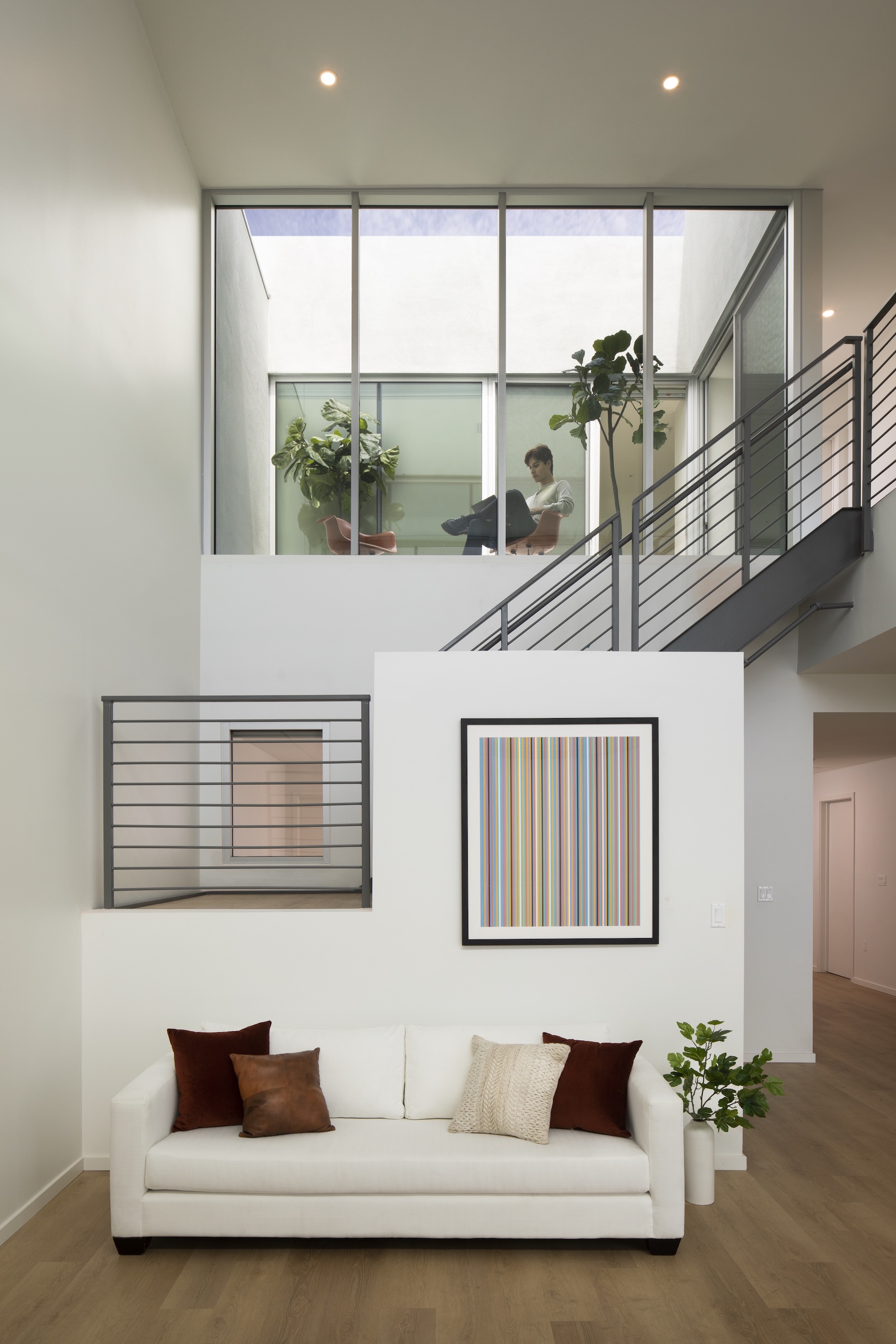
Utilizing the tall ground floor that was originally designed for retail, Studio One Eleven created double height lofts with mezzanines and floor to ceiling windows. On the top floors, inbound townhome units feature interior atriums, created by carving openings in the roof and allowing for interior bedrooms to have direct access to natural light and ventilation. Above the fourth floor, residents have unobstructed views southward over the waterfront, Queen Mary, and Catalina Island beyond, and northward towards downtown Los Angeles and San Gabriel Mountain range beyond. By strengthening part of the parking structure roof, Studio One Eleven was able to add an expansive ground floor amenity deck that features a pool deck and spa, community rooms, and a barbecue area for residents.
Minimizing the overall quantity of material used in a building, especially high-embodied-carbon materials such as concrete, steel, and petrochemical-based insulation products, can significantly reduce the overall embodied carbon of a project. By re-using the existing building for a new purpose, the project results in 69% lowered embodied carbon and 3.19M Kg CO2e emissions avoided, as well as over 26M lbs diverted from the waste stream.
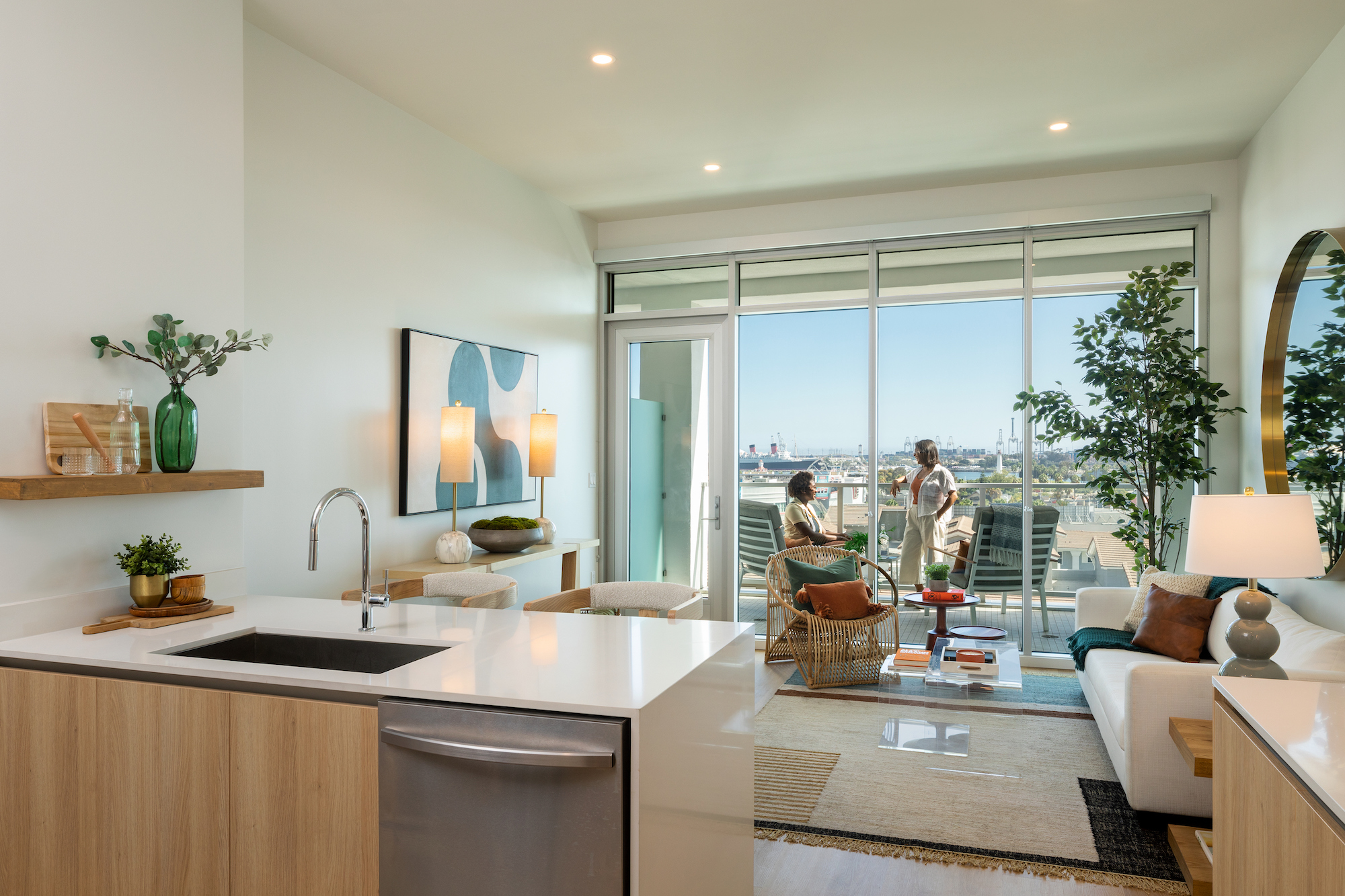
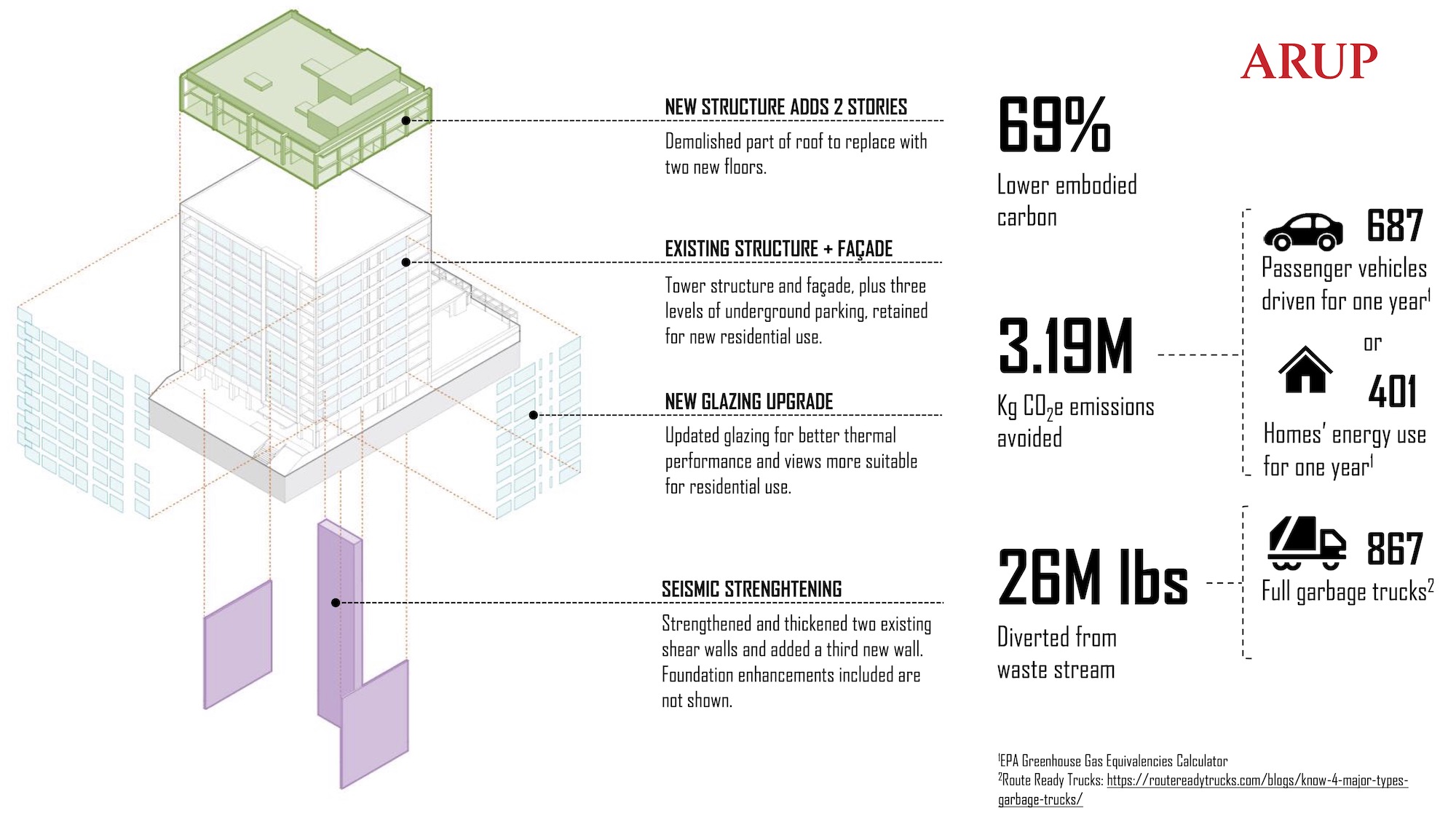
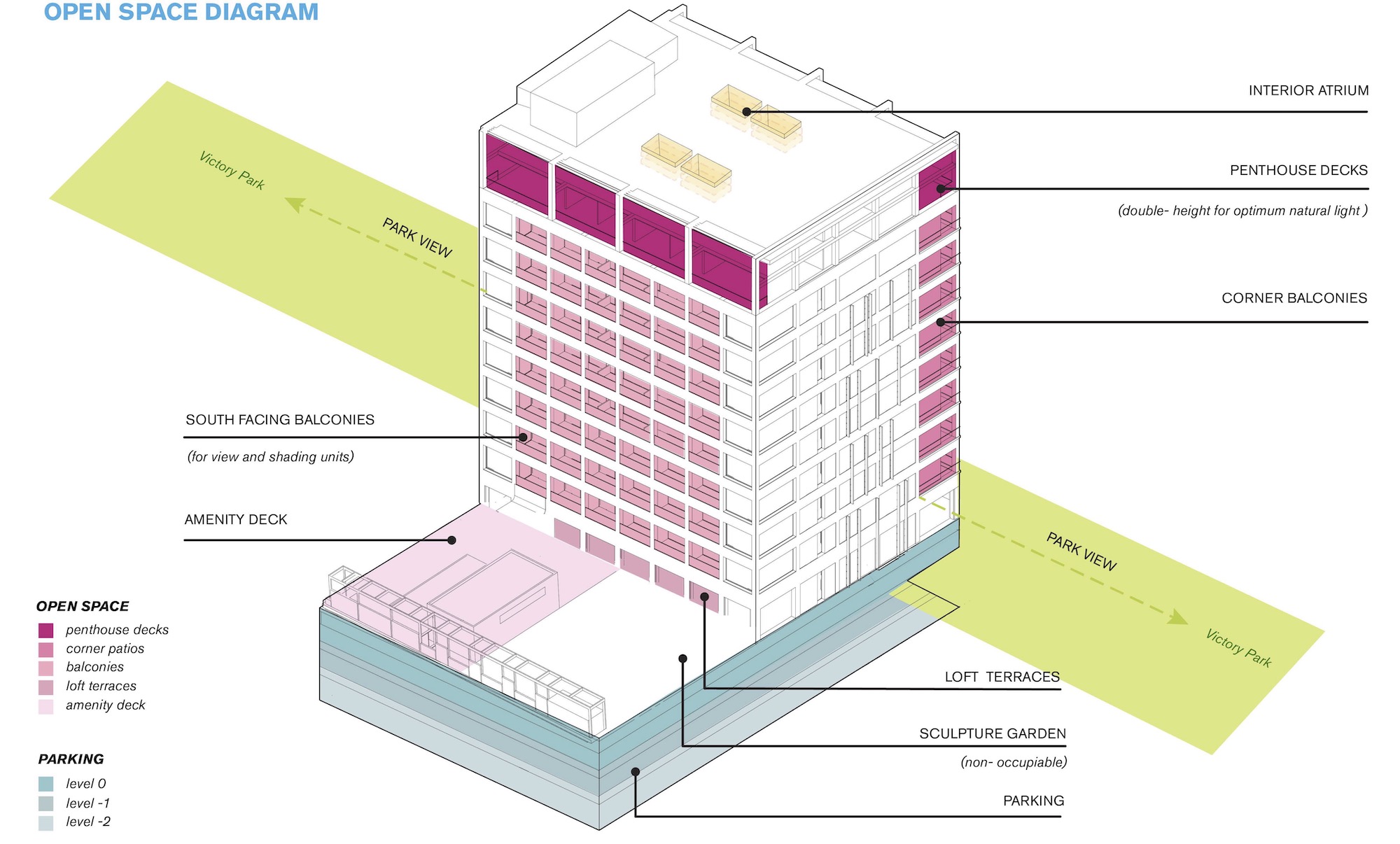
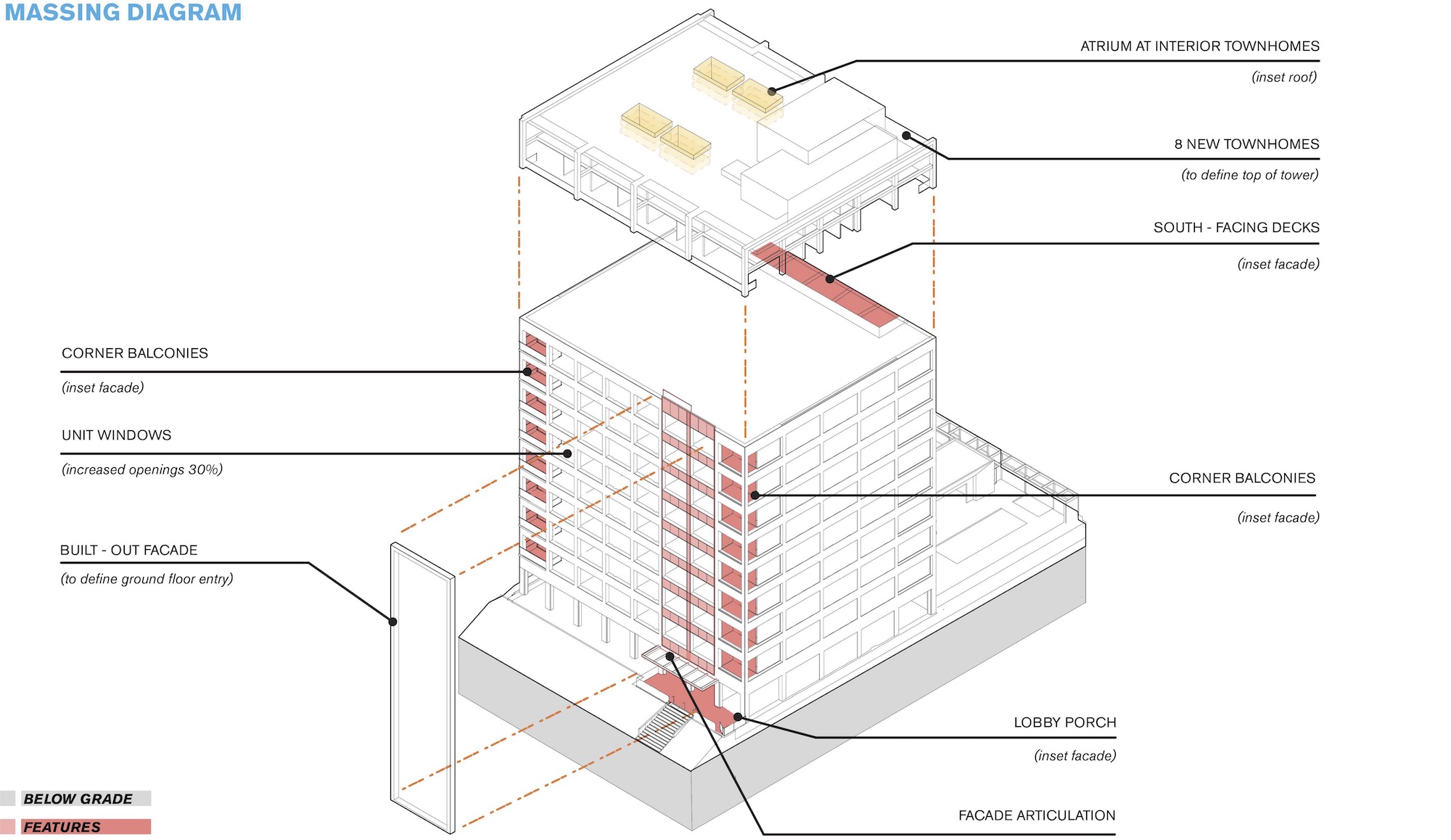
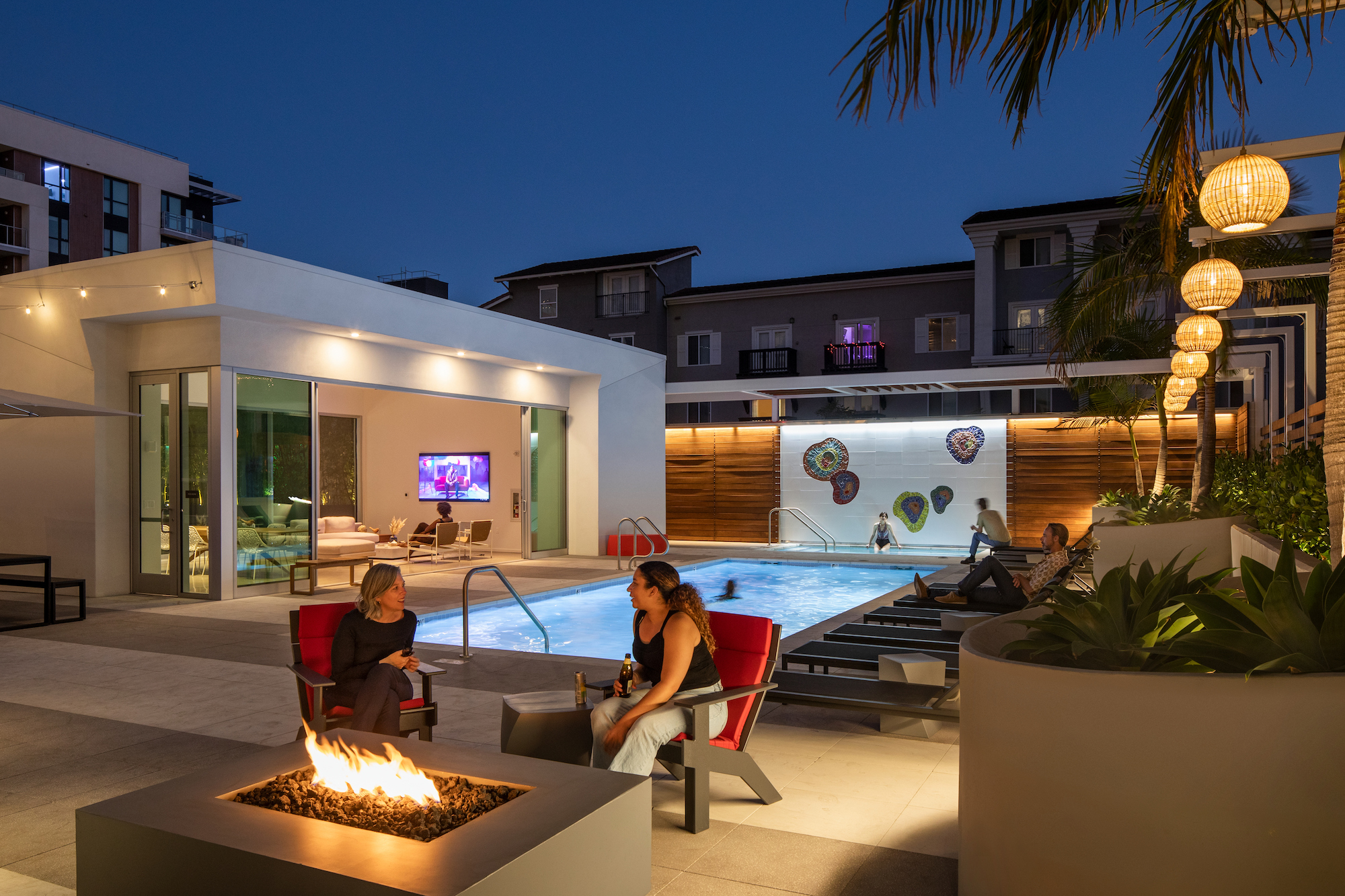
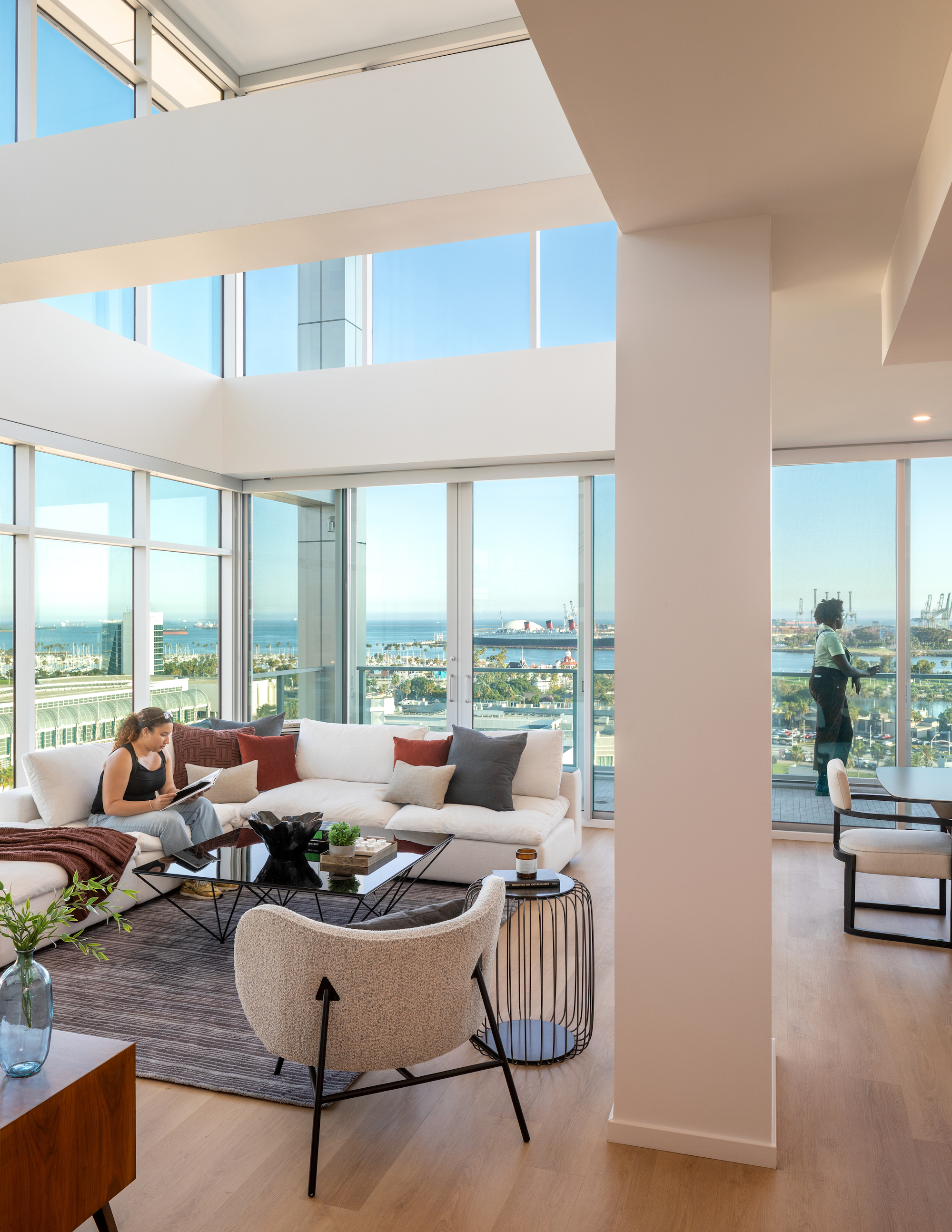
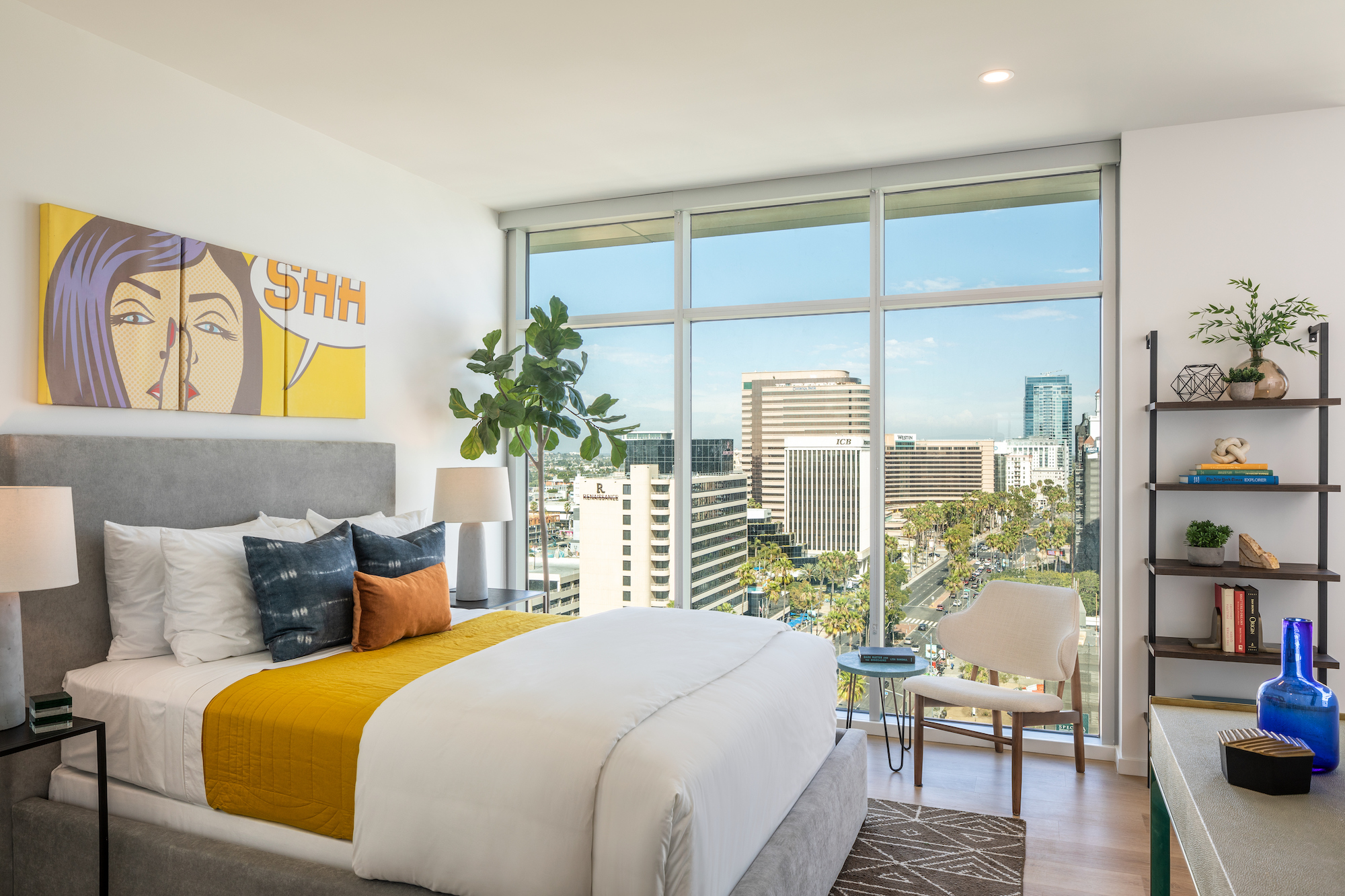
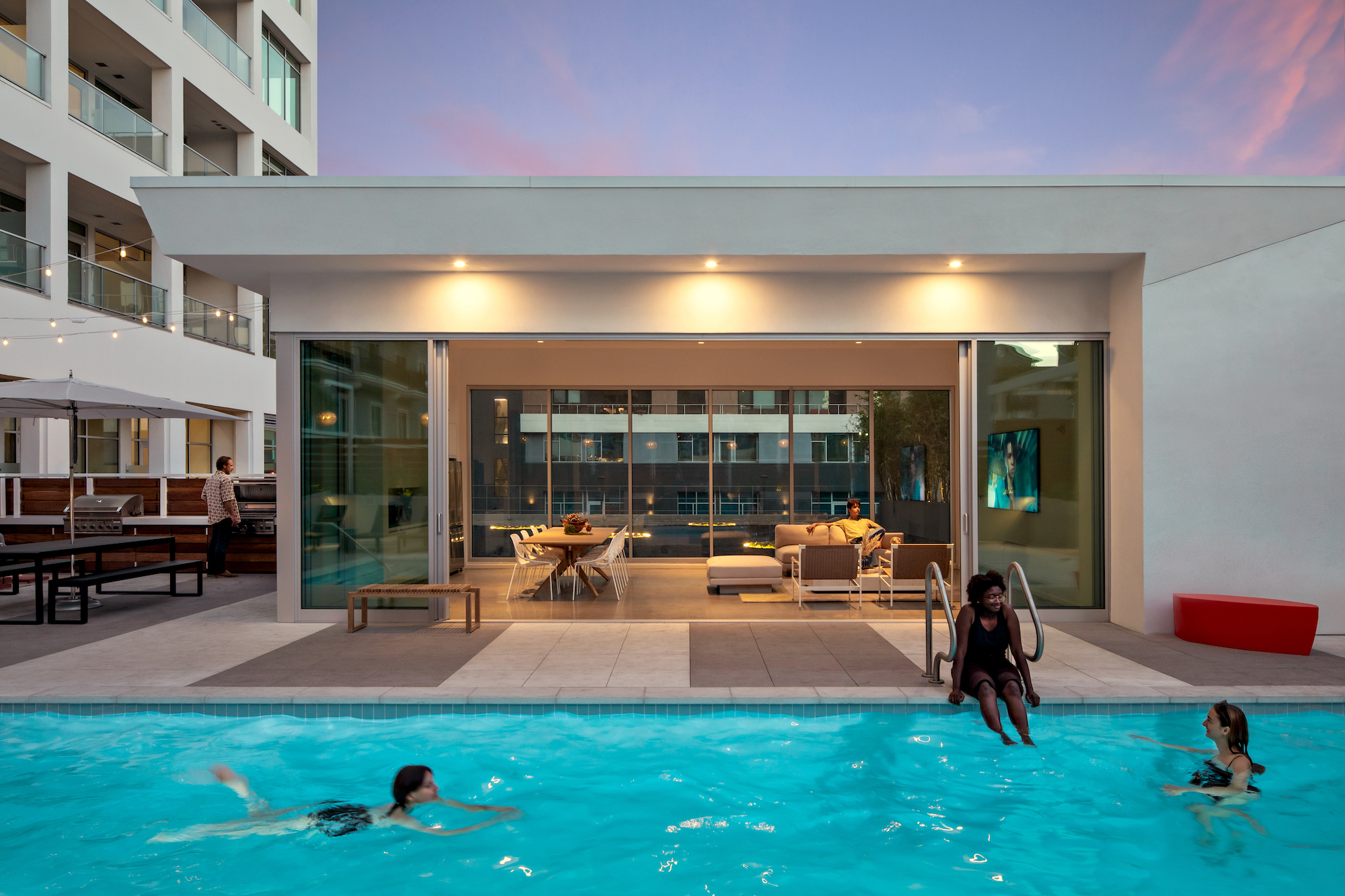
Related Stories
MFPRO+ News | Nov 21, 2023
Underused strip malls offer great potential for conversions to residential use
Replacing moribund strip malls with multifamily housing could make a notable dent in the housing shortage and revitalize under-used properties across the country, according to a report from housing nonprofit Enterprise Community Partners.
MFPRO+ News | Nov 21, 2023
Renters value amenities that support a mobile, connected lifestyle
Multifamily renters prioritize features and amenities that reflect a mobile, connected lifestyle, according to the National Multifamily Housing Council (NMHC) and Grace Hill 2024 Renter Preferences Survey.
Sustainability | Nov 20, 2023
8 strategies for multifamily passive house design projects
Stantec's Brett Lambert, Principal of Architecture and Passive House Certified Consultant, uses the Northland Newton Development project to guide designers with eight tips for designing multifamily passive house projects.
MFPRO+ News | Nov 15, 2023
Average U.S multifamily rents drop $3 to $1,718 in October 2023: Yardi Matrix
Multifamily fundamentals continued to soften and impact rents last month, according to the latest Yardi Matrix National Multifamily Report. The average U.S. asking rent dropped $3 to $1,718 in October, with year-over-year growth moderating to 0.4%, down 40 basis points from September. Occupancy slid to 94.9%, marking the first decline in four months.
Industrial Facilities | Nov 14, 2023
Some AEC firms are plugging into EV charging market
Decentralized electrical distribution is broadening recharger installation to several building types.
MFPRO+ Special Reports | Nov 14, 2023
Register today! Key trends in the multifamily housing market for 2024 - BD+C Live Webinar
Join the BD+C and Multifamily Pro+ editorial team for this live webinar on key trends and innovations in the $110 billion U.S. multifamily housing market. A trio of multifamily design and construction experts will present their latest projects, trends, innovations, and data/research on the three primary multifamily sub-sectors: rental housing, senior living, and student housing.
Multifamily Housing | Nov 9, 2023
Multifamily project completions forecast to slow starting 2026
Yardi Matrix has released its Q4 2023 Multifamily Supply Forecast, emphasizing a short-term spike and plateau of new construction.
MFPRO+ News | Nov 1, 2023
Washington, D.C., Queens, N.Y., lead nation in number of new apartments by zip code
A study of new apartment construction by zip code showed Washington D.C., and the Queens borough of New York City are the hottest multifamily markets since 2018, according to RentCafe.
Adaptive Reuse | Nov 1, 2023
Biden Administration reveals plan to spur more office-to-residential conversions
The Biden Administration recently announced plans to encourage more office buildings to be converted to residential use. The plan includes using federal money to lend to developers for conversion projects and selling government property that is suitable for conversions.


